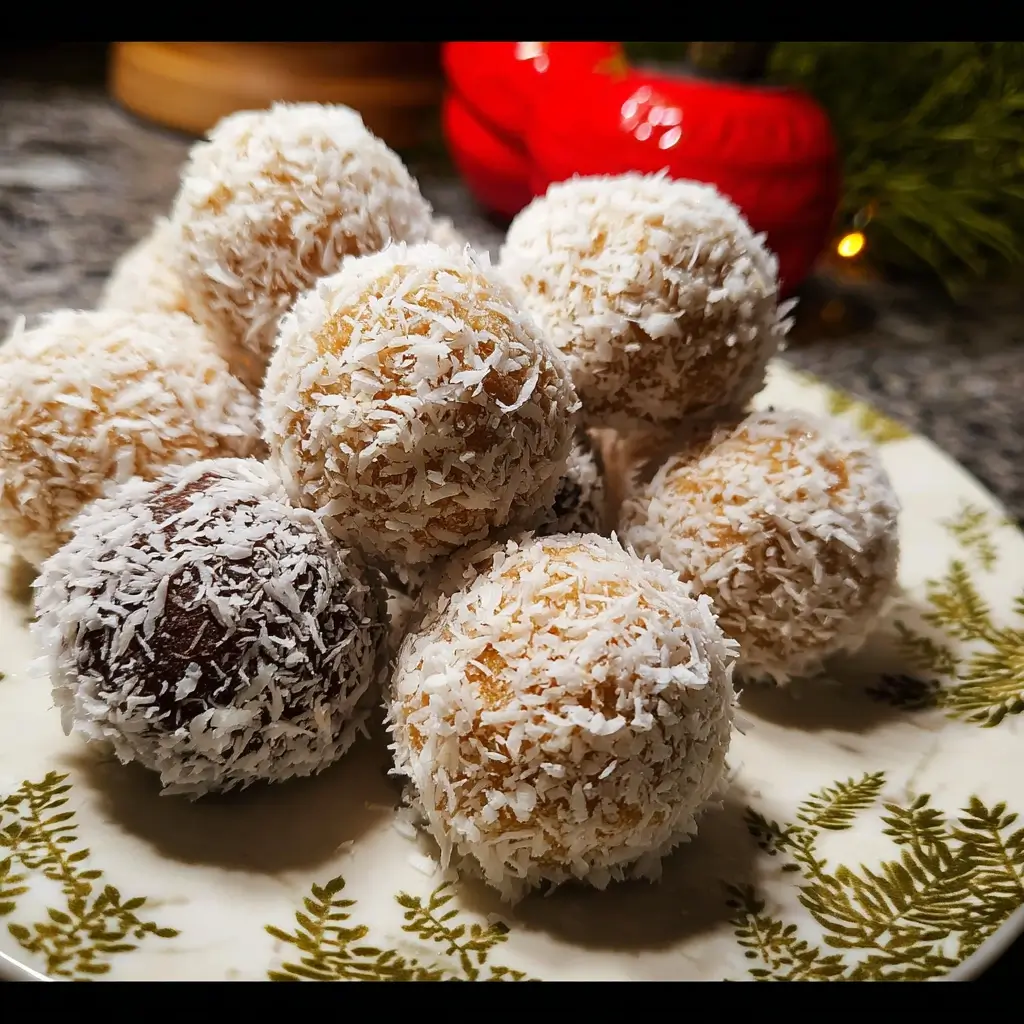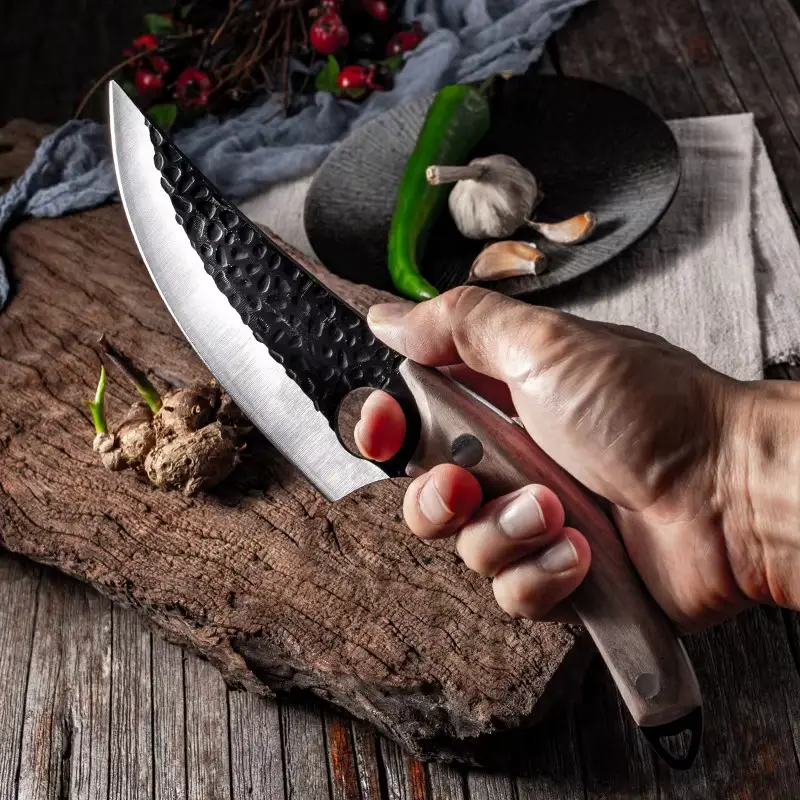Of all the recipes I keep tucked away for emergencies, the one for these No-Bake Coconut Balls is perhaps the most cherished and flour-dusted, despite not needing a speck of flour. I remember the first time I made them. It was for a last-minute school bake sale my son had conveniently forgotten to mention until 9 p.m. the night before. Panic set in, but a quick scan of my pantry revealed the holy trinity of last-minute desserts: a can of sweetened condensed milk, a big bag of shredded coconut, and a bottle of vanilla extract. In less than 20 minutes of active time, I had a tray of these perfect, snowy-white orbs chilling in the fridge. The next day, they were the first thing to sell out. The feedback was universal: they were addictively delicious, a perfect bite of sweet, chewy, tropical paradise. Since then, they’ve become my go-to for everything—holiday cookie platters, potluck contributions, and simple after-dinner treats. They are deceptively simple, yet the result is a sophisticated and satisfying confection that tastes like it took hours of complicated work. This recipe isn’t just about making a dessert; it’s about creating moments of pure, simple joy with minimal effort.
Ingredients
Here is the simple list of components you’ll need to create these heavenly bites. The magic lies in their simplicity and the quality of each ingredient.
- 1 (14-ounce) can Sweetened Condensed Milk: This is the heart of the recipe, acting as both the primary sweetener and the rich, creamy binder that holds everything together. Do not substitute with evaporated milk; they are not the same.
- 5 cups Unsweetened Shredded Coconut: You will need this divided. Four cups go into the main mixture, and one cup is reserved for coating the outside. Using unsweetened coconut allows you to control the final sweetness of the dessert, balancing the rich condensed milk perfectly.
- 2 teaspoons Pure Vanilla Extract: A high-quality vanilla extract elevates the flavor profile, adding a warm, aromatic depth that complements the coconut beautifully.
- 1/4 teaspoon Salt: A small pinch of salt is the secret weapon in most sweet recipes. It doesn’t make the balls salty; instead, it enhances the other flavors and cuts through the sweetness, creating a more balanced and complex taste.
Instructions
Follow these step-by-step instructions for foolproof coconut balls every time. The process is incredibly straightforward, making it a perfect recipe for beginners or for making with kids.
- Prepare Your Workstation: Line a large baking sheet with parchment paper or wax paper. This is crucial for preventing the coconut balls from sticking as they chill and set. Set aside the 1 cup of reserved shredded coconut in a shallow bowl or on a plate.
- Combine the Core Ingredients: In a large mixing bowl, pour in the entire can of sweetened condensed milk. Add 4 cups of the unsweetened shredded coconut, the pure vanilla extract, and the salt.
- Mix Thoroughly: Using a sturdy spatula or a wooden spoon, mix the ingredients together until they are fully combined. The mixture will be very thick, sticky, and paste-like. Make sure there are no dry pockets of coconut and that the condensed milk is evenly distributed throughout.
- The Crucial Chilling Step: Cover the mixing bowl with plastic wrap and place it in the refrigerator to chill for at least 30 to 60 minutes. This step is non-negotiable! Chilling the mixture makes it significantly less sticky and much firmer, which is essential for rolling it into neat, uniform balls.
- Portion and Roll: Once the mixture is thoroughly chilled, remove it from the refrigerator. For uniform sizing, use a small cookie scoop or a tablespoon to portion out the mixture. Scoop one portion at a time and roll it firmly between the palms of your hands to form a smooth, compact ball approximately 1 to 1.5 inches in diameter. If your hands become too sticky during the process, you can lightly dampen them with water or keep a small dish of powdered sugar nearby to dust them with.
- Coat the Balls: Take each freshly rolled ball and immediately drop it into the shallow bowl containing the 1 cup of reserved shredded coconut. Gently roll it around until it is evenly and generously coated on all sides. The outer layer of coconut adds a wonderful texture and ensures the balls won’t stick together during storage.
- Final Set: Place the finished, coated coconut ball onto the prepared parchment-lined baking sheet. Repeat the portioning, rolling, and coating process until you have used all of the mixture.
- Chill to Firm: Place the entire baking sheet of coconut balls back into the refrigerator for at least another hour to allow them to set and become completely firm. This final chill solidifies their shape and melds the flavors together perfectly. After this, they are ready to be served.
Nutrition Facts
- Servings: This recipe yields approximately 30-36 one-inch balls.
- Calories per serving (1 ball): Approximately 95-110 kcal.
- Fat: Primarily sourced from the coconut, this provides the rich mouthfeel and is a source of medium-chain triglycerides (MCTs).
- Carbohydrates: The main source of immediate energy, coming from both the sugar in the condensed milk and the natural carbohydrates in the coconut.
- Sugar: These are sweet treats, with most of the sugar content coming from the sweetened condensed milk.
- Protein: A small amount of protein is present from the milk solids and coconut.
- Sodium: A minimal amount from the added salt, which is key for balancing the overall flavor.
(Disclaimer: The nutritional information provided is an estimate and can vary based on the specific brands of ingredients used.)
Preparation Time
The beauty of this no-bake recipe is its speed and simplicity. The total time is mostly inactive chilling time, making it a low-effort, high-reward dessert.
- Active Preparation Time: 15-20 minutes (for mixing and rolling)
- Inactive Chilling Time: 1.5 – 2 hours (for the initial chill and the final set)
- Total Time: Approximately 2 to 2.5 hours
How to Serve
These versatile No-Bake Coconut Balls can be presented in numerous delightful ways, fitting any occasion from a casual snack to an elegant dessert buffet.
- Classic and Simple:
- Arrange them neatly on a clean white platter or a rustic wooden board. The contrast makes the snowy-white balls pop.
- Serve them chilled, straight from the refrigerator, for the best firm texture.
- For a Party or Dessert Buffet:
- Place each coconut ball in a decorative mini cupcake liner. This adds a touch of elegance, makes them easy for guests to pick up, and prevents them from touching other desserts on a platter.
- Create a dessert tower by stacking them carefully on a tiered stand.
- As an Edible Gift:
- Package them in a beautiful cookie tin, a clear cellophane bag tied with a festive ribbon, or a small gift box. They make a wonderful and thoughtful homemade gift for holidays, birthdays, or as a thank-you gesture.
- Paired with Beverages:
- Serve alongside a hot cup of coffee or a rich espresso. The bitterness of the coffee beautifully cuts through the sweetness of the coconut balls.
- They are a perfect companion to a cup of black tea or herbal tea.
- For a truly decadent experience, pair them with a small glass of dessert wine or a creamy liqueur like Baileys.
- Creative Variations:
- Before serving, drizzle the tops with melted dark, milk, or white chocolate for a professional-looking finish.
- For a festive touch during the holidays, roll them in colorful sprinkles or finely crushed peppermint candies instead of the final coconut coating.
Additional Tips
Unlock the full potential of your No-Bake Coconut Balls with these eight expert tips, designed to ensure perfect results and inspire creative variations.
- Don’t Skip the Chill: I cannot stress this enough. Chilling the coconut mixture for at least 30 minutes before you attempt to roll it is the most critical step. It allows the coconut to absorb some of the moisture from the condensed milk, making the “dough” less sticky and much easier to handle. Rushing this step will result in a frustrating, sticky mess.
- Master the Sticky Situation: Even after chilling, the mixture can be sticky. To combat this, keep a small bowl of cool water or a small dish of powdered sugar next to your workstation. Periodically dampen your hands slightly with water or dust them with powdered sugar. This creates a temporary barrier that prevents the mixture from sticking to your palms as you roll.
- Toast the Coconut for Deeper Flavor: For a more complex, nutty, and sophisticated flavor profile, toast the shredded coconut before using it. Spread the coconut on a baking sheet and bake at 350°F (175°C) for 5-7 minutes, stirring occasionally until it’s light golden brown. Let it cool completely before mixing it with the condensed milk. You can use toasted coconut in the mixture, for the coating, or both!
- Uniformity is Your Friend: Use a small cookie scoop (about 1 tablespoon size) to portion the mixture. This not only speeds up the process but also ensures that all your coconut balls are uniform in size. This looks more professional and ensures that each bite is consistent.
- Introduce a Surprise Center: Elevate your coconut balls by adding a surprise in the middle. Before rolling the mixture into a ball, press a single toasted almond, a hazelnut, a maraschino cherry (patted very dry), or a semi-sweet chocolate chip into the center and form the ball around it.
- Dip in Chocolate for a Truffle Effect: Transform these simple balls into elegant coconut truffles. After the final chill, melt high-quality dark, milk, or white chocolate. Using two forks, dip each ball into the melted chocolate, tap off the excess, and place it back on the parchment paper to set. You can sprinkle the wet chocolate with more coconut, chopped nuts, or sea salt.
- Experiment with Flavors: The base recipe is a perfect canvas for other flavors. Consider adding 1/2 teaspoon of almond extract for a flavor reminiscent of an Almond Joy bar, the zest of one lime or lemon for a bright, zesty kick, or a tablespoon of high-quality unsweetened cocoa powder for a chocolate-coconut version.
- Proper Storage is Key: To maintain their freshness and firm texture, store the coconut balls in an airtight container in the refrigerator for up to two weeks. For longer storage, they freeze exceptionally well. Place them in a single layer on a baking sheet to “flash freeze” for an hour, then transfer them to a freezer-safe bag or container. They will last for up to three months in the freezer. Thaw in the refrigerator for an hour before serving.
FAQ Section
Here are answers to some of the most frequently asked questions about making No-Bake Coconut Balls.
1. Can I make this recipe vegan?
Absolutely! This recipe is very easy to adapt for a vegan diet. Simply substitute the regular sweetened condensed milk with a can of sweetened condensed coconut milk, which is widely available in most major grocery stores. Ensure your vanilla extract is also certified vegan. The result is just as creamy and delicious, with an even more intense coconut flavor.
2. My mixture is way too sticky to roll, even after chilling. What went wrong?
This is the most common issue and it usually has a simple fix. It likely means the ratio of coconut to condensed milk is slightly off. The fix is to add more shredded coconut, a few tablespoons at a time, and mix it in until the dough becomes firmer and more manageable. Let it chill for another 15-20 minutes after adding more coconut before trying to roll again.
3. Can I use sweetened shredded coconut instead of unsweetened?
You can, but be prepared for a significantly sweeter result. The sweetened condensed milk is already very sweet, so using sweetened coconut on top of that can be overwhelming for some palates. If you only have sweetened coconut, I recommend omitting the extra cup for coating and just rolling them as is, or perhaps rolling them in finely chopped nuts to offset the sweetness.
4. How long do these No-Bake Coconut Balls stay fresh?
When stored correctly, their shelf life is quite good. In an airtight container in the refrigerator, they will remain fresh and delicious for up to two weeks. If you leave them at room temperature, they will become soft and should be consumed within two days. For the best long-term storage, freezing is the ideal method.
5. Why are my coconut balls not holding their shape and seem to be “weeping”?
This usually happens for one of two reasons. Either the mixture was not chilled sufficiently before rolling, or the ratio was off and there’s too much condensed milk. If they are falling apart after being rolled and chilled, it points to a ratio issue. Try to salvage the batch by returning the mixture to a bowl, adding more coconut, and re-chilling before rolling again.
6. Can I make this recipe without sweetened condensed milk?
This specific recipe relies on sweetened condensed milk for its signature texture and flavor. However, you can make other types of no-bake coconut balls using different binders. Popular alternatives include mixing shredded coconut with melted white chocolate, or for a healthier version, blending dates, coconut, and a little coconut oil in a food processor to form a paste that can be rolled into balls. These will result in a different, though still delicious, treat.
7. Are these No-Bake Coconut Balls gluten-free?
Yes, this recipe is naturally gluten-free as it contains no wheat or gluten-containing grains. All the core ingredients—coconut, condensed milk, and vanilla—are typically gluten-free. However, if you have a severe allergy or celiac disease, it is always wise to double-check the labels on your ingredients (especially the vanilla extract) to ensure they were not processed in a facility with wheat and are certified gluten-free.
8. Can I add alcohol to this recipe for an adult treat?
Certainly! For a boozy twist, you can add 1 to 2 tablespoons of a complementary liqueur. Coconut rum (like Malibu), a dark rum, or a creamy liqueur like Baileys or Kahlua would work wonderfully. Mix the alcohol in with the condensed milk and vanilla at the beginning. Be mindful not to add too much liquid, as it can make the mixture too soft to roll properly. If it does, simply compensate with a bit more shredded coconut.






